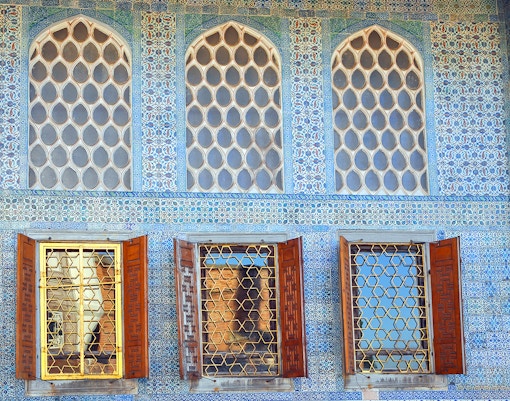Topkapi Palace is one of the world’s largest surviving palaces and was built between 1460 and 1478 under the orders of Sultan Mehmed II a few years after he conquered Constantinople. The palace served as the home of the Ottoman Sultans for almost four centuries. It was also the state’s administrative and educational headquarters.
After Mehmed’s death, about 30 sultans ruled from the palace renovating and expanding it to its current appearance - a unique mix of Islamic, European, and Ottoman architecture styles. Comprising four courtyards and over 400 rooms, the palace was home to an estimated 4,000 people, including 300 concubines in the Harem.























